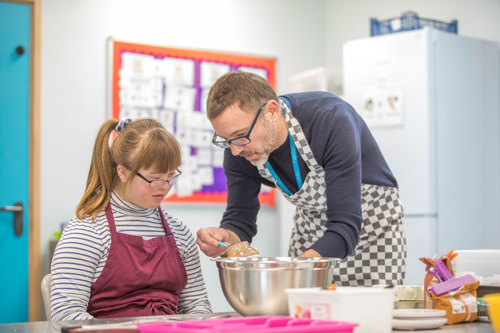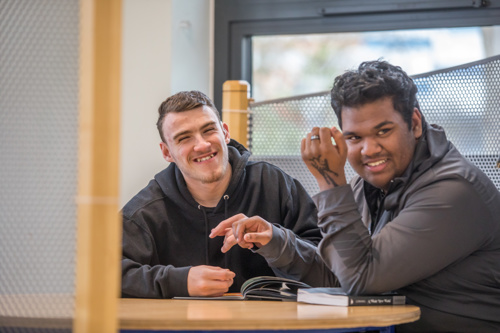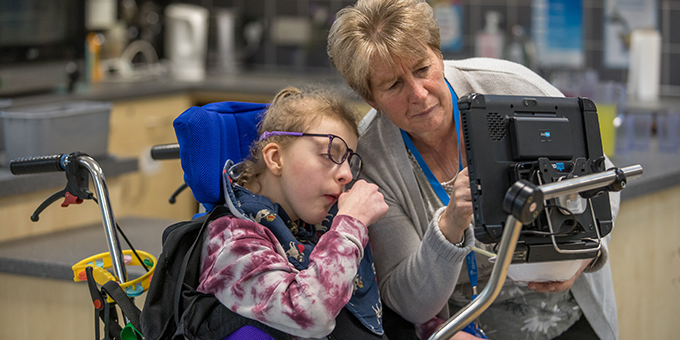Claire Dorer OBE, CEO of the National Association of Special Schools (NASS), discusses the evolving landscape of special education, innovative teaching methods, and the future of the sector. From immersive learning environments to the importance of learner voice and the wellbeing of both students and staff, Claire shares her expertise and vision for special education.
 Innovative teaching methods in special education
Innovative teaching methods in special education
“In special education, NASS has seen a variety of exciting innovations. One of the areas where we’ve seen significant progress is in the use of robotics. Schools like Priors Court in Berkshire were early pioneers in using robots to support autistic students, and it's been quite successful.”
“Our largest member group, Outcomes First, has been investing in immersive classrooms that use technology to create rich, engaging learning environments.”
“These innovations are about more than just technology; they’re about creating spaces that engage students in a way that feels exciting and meaningful. We’ve seen thematic learning amplified through immersive environments, helping students become deeply engaged in their learning,” says Claire.
“Additionally, changes in the physical classroom environment, such as improved sound insulation, coloured filters for emotional regulation, and connections to nature, play a crucial role in supporting diverse learning needs.”
“However, one of the challenges special schools face is getting recognised for their innovative efforts. ASDAN is sponsoring our October NASS Awards, which celebrate innovation within the sector. Through blogs, workshops, and presentations at special interest groups, we work to showcase these incredible practices and encourage other schools to adopt similar approaches.”
The importance of person-centered planning tools
At the heart of effective special education is person-centered planning, which empowers students to have a say in their educational journey.
“Person-centered planning is the foundation of good provision,” says Claire. “It’s particularly crucial for students who have difficulty using formal verbal communication. Historically, there was a belief that non-verbal students didn’t have a voice, but we know that every student communicates in their own way—through body language, gestures, or other subtle cues.”
“The tools that capture these different forms of communication are vital. Whether it’s a switch for yes/no choices or a more advanced communication device, these tools empower students to express their preferences.”
“The journey towards a student realising they have a voice is something that schools need to embrace. It’s not just about capturing the voice of the learner but ensuring it leads to meaningful choices and outcomes.”
“When schools have formalised tools to capture learner voices, it also acts as an important aid in ensuring that nothing is overlooked in the educational process.”

Future trends shaping SEN education and wider societal behaviour
Looking ahead, two major trends stand out in shaping the future of special education: trauma-informed practices and the growing societal recognition of neurodiversity.
“Trauma-informed practice is an area that many schools are beginning to recognise, but we’re still at the early stages of fully embedding it,” says Claire. “Trauma-informed approaches are not just about actions; they require a shift in mindset across the entire school, from supporting students to emotionally regulating staff members as well.”
“I believe it will take years to fully integrate these practices into everyday school life, and once we achieve that, we must focus on how pedagogy can align with the emotional well-being of students.”
“Another significant trend is the growing recognition of neurodiversity. It's interesting how we’re shifting linguistically. We’ve talked about neurodiversity and neurotypical, but I’m hearing less of the word ‘neurotypical’ at the moment, which delights me because I think we would struggle to identify who is the person who is neurotypical.
“We’re using ‘neurodivergent’ more now, and as a society, we’re recognising difference in ever greater numbers. This will have major implications for mainstream schooling. At some point, we must stop ‘othering’ an ever-larger group of people. I believe mainstream education is very locked into an outdated model of teaching and learning.”

Transitioning from school to adulthood remains one of the most critical and challenging phases for students with special educational needs. While schools and organisations like NASS and ASDAN have made significant strides in preparing students for employment and independent living, the transition to adulthood often highlights gaps in support.
“The transition to adulthood is often where we see things fall apart,” says Claire. “There is a disconnect between what schools can provide and the lack of support available once students leave school, particularly when it comes to adult social care.”
“Transition planning should start as early as year nine to ensure that students and their families have enough time to prepare for life beyond school. It’s critical to remove barriers such as delayed planning and inadequate support for those entering adulthood.”
Addressing the growing demand for special educational services
“The growing demand for special education services, especially in the context of mental health and wellbeing, is a huge concern,” says Claire. “The stress and emotional strain on staff can significantly impact their ability to support students effectively. There is a direct link between staff wellbeing and student outcomes, so it’s crucial that we address staff mental health.”
“At NASS, we’re working with organisations like Glass House to retain and recruit staff by using psychometrics to understand their needs and resilience. By doing so, schools can provide more personalised support to their staff. It’s not just about offering perks like gym memberships—it’s about understanding what motivates staff and how to best support them through their individual challenges.”
Claire Dorer’s work with NASS is a testament to her deep commitment to improving the lives of learners with special educational needs and the educators who support them. Through innovative teaching methods, advocacy for learner voice, and a focus on staff wellbeing, Claire’s leadership continues to shape the future of special education.
